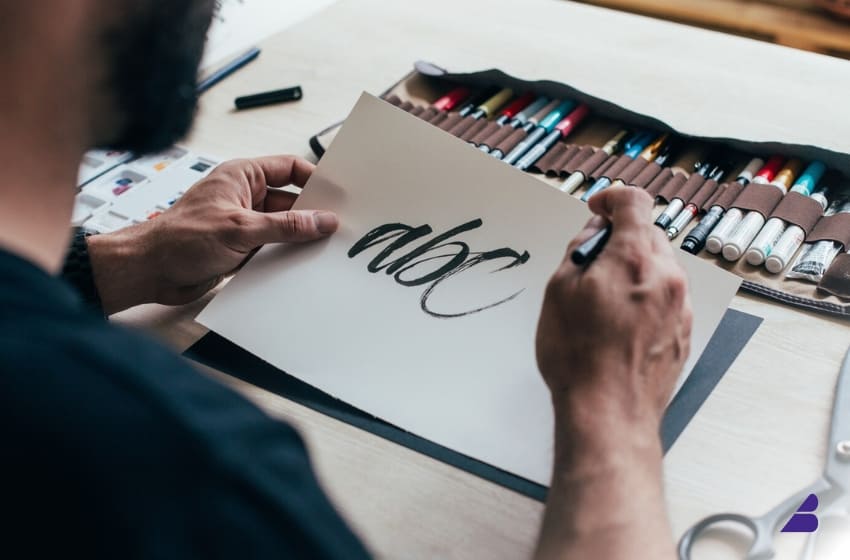
In the world of branding, typography is more than just choosing a font—it’s a statement of identity. The way letters are shaped, spaced, and styled influences how people perceive your brand, even on something as small as a business card.
The right typography can make your brand feel elegant, powerful, modern, or timeless. On the other hand, a poor choice of font can make your business appear unprofessional or generic. Let’s explore how typography plays a critical role in branding and why it matters on your business card.
1. Why Typography is Crucial for Brand Identity
Typography conveys a brand’s personality, values, and message—sometimes even more than a logo.
✔ First Impressions Matter – The font you choose immediately sets a tone.
✔ Consistency Builds Trust – A strong typographic system makes your brand recognizable.
✔ Legibility Enhances Communication – The right balance of size, spacing, and weight makes a design effective.
✔ Emotionally Engaging – Different fonts evoke different emotions.
💡 Example: A law firm using a bold serif font (like Times New Roman) communicates authority and tradition, while a startup using a geometric sans-serif (like Montserrat) feels modern and innovative.
2. The Psychology Behind Fonts
Different fonts trigger different emotions and perceptions. Here’s how they shape brand identity:
🔹 Serif Fonts – Classic & Trustworthy
- Examples: Times New Roman, Garamond, Baskerville
- Best for: Luxury brands, law firms, finance, editorial brands
- What they convey: Stability, professionalism, tradition
🔹 💡 Example: A high-end watch brand might use Baskerville to highlight sophistication.
🔹 Sans-Serif Fonts – Modern & Minimalist
- Examples: Helvetica, Montserrat, Futura, Open Sans
- Best for: Tech companies, startups, creative agencies
- What they convey: Clean, progressive, contemporary
🔹 💡 Example: Google uses Product Sans to represent its modern, user-friendly identity.
🔹 Script & Handwritten Fonts – Elegant & Artistic
- Examples: Pacifico, Lobster, Allura, Great Vibes
- Best for: Fashion, beauty, photography, boutique businesses
- What they convey: Creativity, sophistication, personalization
🔹 💡 Example: A luxury wedding planner might use Great Vibes for a refined, romantic feel.
🔹 Display Fonts – Bold & Distinctive
- Examples: Bebas Neue, Impact, Playfair Display
- Best for: Branding that needs a strong visual impact (advertising, entertainment, sports brands)
- What they convey: Uniqueness, boldness, high energy
🔹 💡 Example: A music festival brand might use Bebas Neue for a loud, dynamic presence.
3. Typography on Business Cards: Why It Matters
A business card may be small, but typography still plays a huge role in how people perceive your brand.
✔ Legibility is Key – Avoid fonts that are too thin, too decorative, or too condensed.
✔ Hierarchy Matters – Your name, job title, and contact details should be easy to read.
✔ Font Pairing Can Elevate Design – Combining a bold serif with a clean sans-serif creates balance.
✔ Spacing & Alignment Affect Readability – Proper letter-spacing (kerning) and line spacing (leading) enhance clarity.
💡 Example: A luxury interior designer’s business card using a sleek serif for the name and a minimal sans-serif for details creates an elegant contrast.
4. Choosing the Right Typography for Your Business Card
🔹 Step 1: Define Your Brand Personality
- Is your brand luxurious or playful?
- Are you aiming for minimalism or boldness?
🔹 Step 2: Prioritize Readability
- Choose a clear and professional font for contact details.
- Keep font sizes between 8pt – 12pt for easy reading.
🔹 Step 3: Use Two Fonts Maximum
- Primary Font – For your name & company name (can be bold or decorative).
- Secondary Font – For details like phone number, email, website (should be simple and clean).
🔹 Step 4: Play with Font Weights & Styles
- Bold for name & title
- Light or regular weight for contact details
- Italic or script for accents
💡 Example: A consulting firm might use a bold serif for the name and a modern sans-serif for details, while a photographer might use a handwritten script for a personal touch.
5. Typography Trends in 2025 for Business Cards
🚀 What’s trending in business card typography this year?
✔ Minimalist Sans-Serifs – Clean, easy-to-read fonts like Inter & Gotham.
✔ Bold & Oversized Typography – Making names stand out with big, chunky letters.
✔ Elegant Serif Fonts – Bringing back timeless, classic elegance.
✔ Mixed Typography Styles – Combining serif and sans-serif for contrast.
✔ Handwritten & Signature Fonts – Adding a personal touch to creative industries.
💡 Example: A high-end brand designer might use Playfair Display (serif) for their name and Montserrat (sans-serif) for the rest of the card.
6. Mistakes to Avoid When Using Typography on Business Cards
🚫 Avoid These Common Font Mistakes:
❌ Too Many Fonts – Stick to two max for a clean look.
❌ Overly Decorative Fonts – Fancy scripts are hard to read in small sizes.
❌ Bad Contrast – Ensure the font color contrasts well with the background.
❌ Tiny or Large Text – Keep fonts between 8pt-12pt for readability.
💡 Example: A law firm’s business card using a thin, script font in light gray on a white background could look unreadable and unprofessional.
Final Thoughts: Typography is a Silent Brand Ambassador
Typography isn’t just decoration—it’s a strategic tool that influences how people perceive your brand. Even on something as simple as a business card, the right choice of fonts can make a powerful statement.
✔ A modern sans-serif can make you look innovative.
✔ A classic serif can make you look professional.
✔ A stylish script can make you look elegant.
💡 Takeaway: If you want your business card to leave an impact, make sure your typography aligns with your brand’s identity. 🚀




